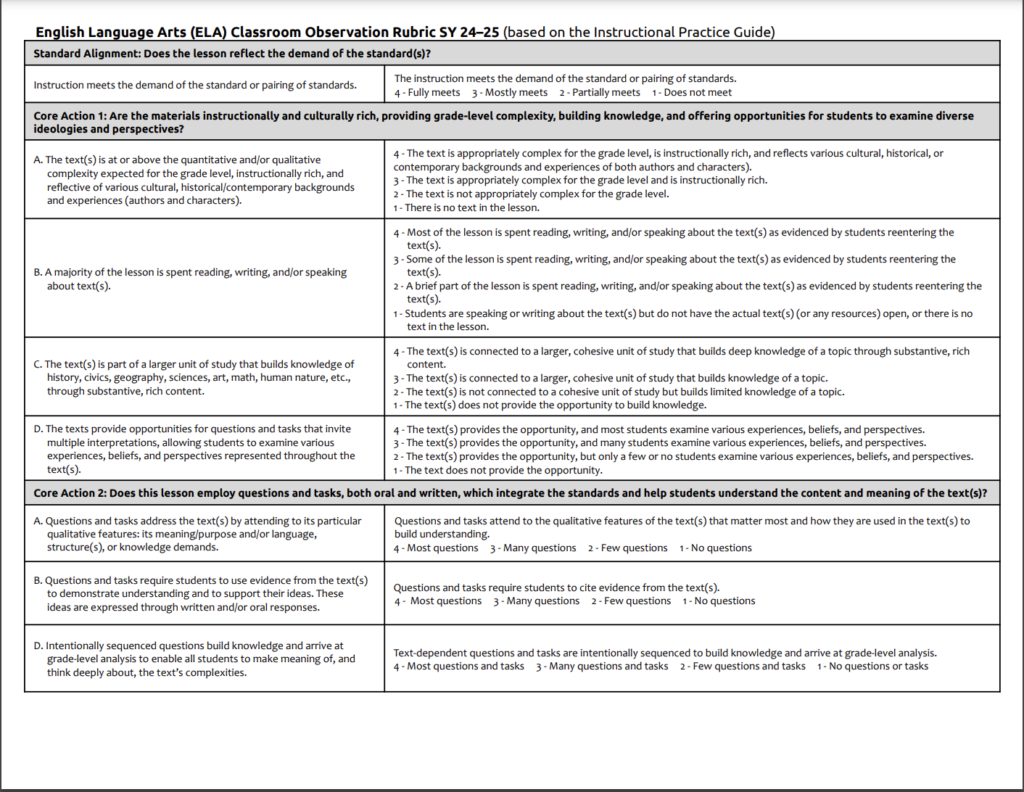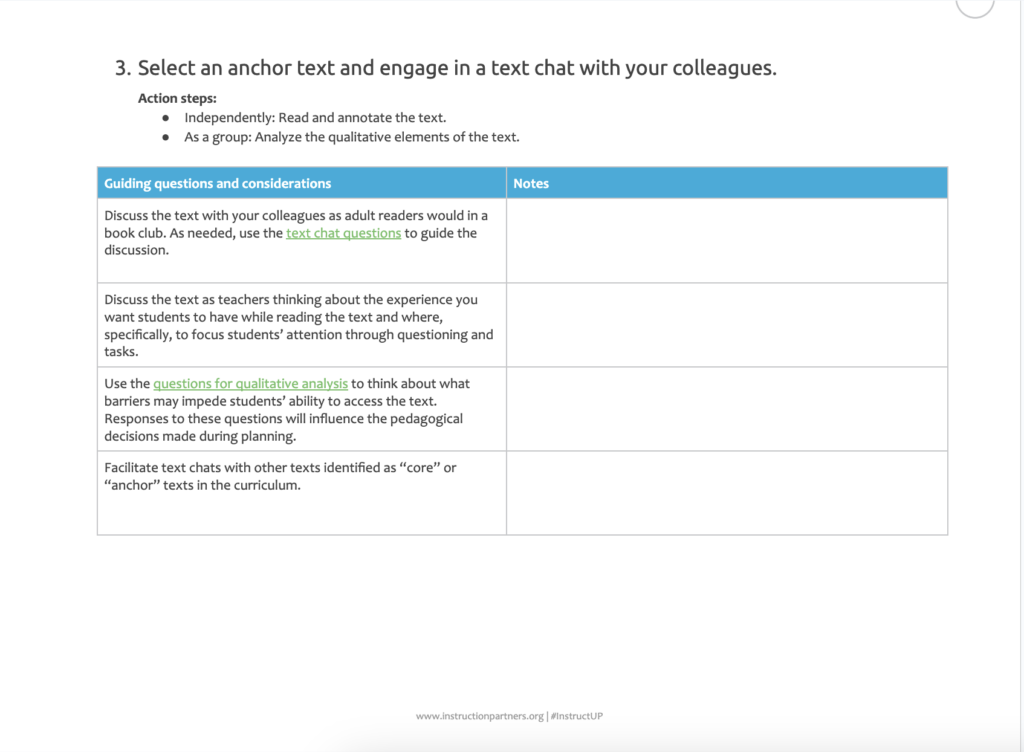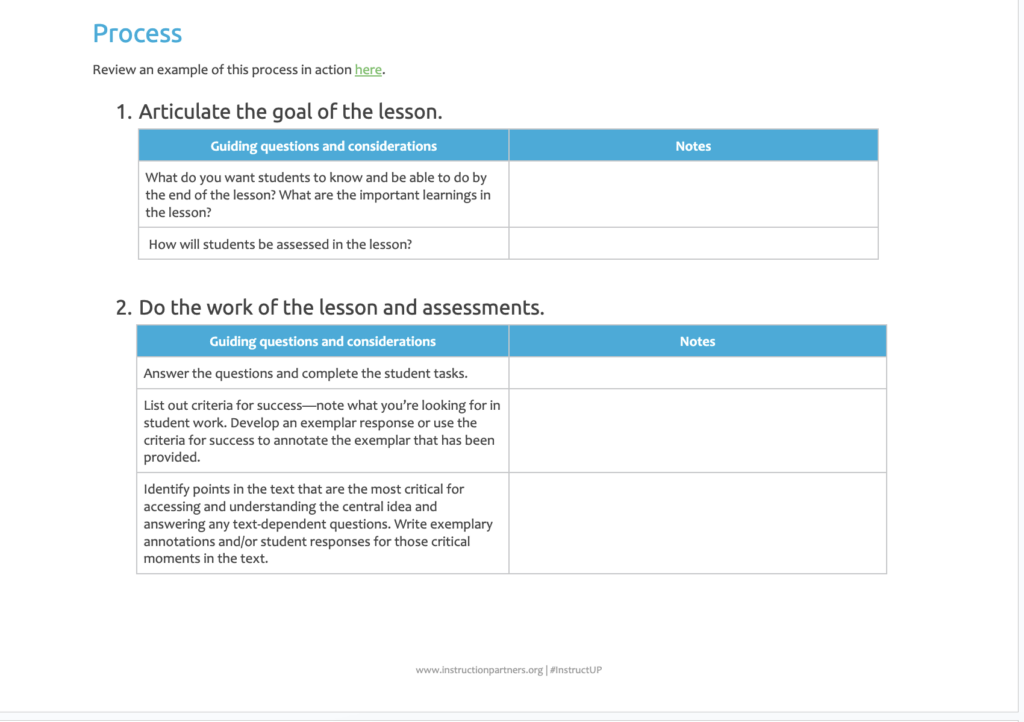ELA Professional Learning Tools
Free leadership tools for effective ELA coaching and collaborative planning
Effective collaborative planning ensures that teachers have the time they need to set clear lesson outcomes, anticipate and adjust their instruction to meet students’ needs, and improve their practice in a specific focus area. And, with the help of a ELA classroom observation tool, leaders can ensure that collaborative planning time is focused on the most important aspects of ELA instruction.
Explore our guidance, tools, and protocols for supporting high-quality ELA instruction below.

The Instructional Practice Guide
The ELA Instructional Practice Guide is a classroom observation tool that describes “core actions” associated with standards-aligned content, effective teaching, and meaningful student engagement. Each core action includes indicators and a rating scale, making it easy to identify trends across classrooms and track progress over time.
You can use this tool to establish a vision for high-quality instruction and focus improvement efforts where they’re most needed.

Protocol for ELA Unit Internalization
Unit internalization is the process by which teachers study a unit to deeply understand what students are expected to learn, how students will be assessed, and the arc of learning over the course of the unit.
Our ELA Unit Internalization Protocol is designed to deepen educators’ understanding of the unit, including 1) deeply examining the texts through the lens of a reader and a teacher and 2) planning for the background knowledge building and fluency practice that will support all students.

Protocol for ELA Lesson Preparation
Once teachers have identified the unit-level learning goals and pinpointed the key lessons that will have the most impact on those goals, they can dive into the detailed process of lesson preparation.
Our ELA Lesson Preparation Protocol is designed to guide teachers through the process of: 1) articulating the lesson’s goal (content and skill); 2) doing the work of the lesson and determining what students need to know and do to be successful; 3) recognizing where the most time and attention is needed in the lesson; and 4) planning for the vocabulary and syntax work that will support all students.
Looking for more resources to strengthen your PL structures?
Explore our Professional Learning Conditions and Practices for action plans, practical tools, and guidance for strengthening professional learning structures in your school.
me
there